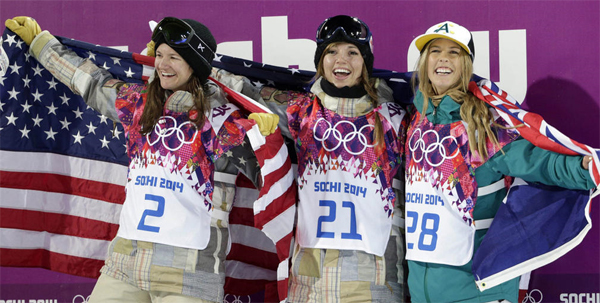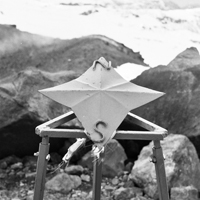
The gap in talent between the women’s U.S. snowboarding team at the Sochi Olympics and the rest of the field (other than Torah Bright from Australia) has once again been proven. Today, February 12, 2014, Kaitlyn Farrington won the gold, two-time gold medalist Kelly Clark claimed the bronze, and Hannah Teter came in 4th. Only Torah Bright, who also competed in the slopestyle and will compete in snowboardcross later in the Games, was able to take home a medal with an awesome run for silver.
Unlike the constant hype heard across news channels regarding the men’s halfpipe and whether or not Shaun White would three-peat his gold medal attempt, the women’s snowboarding coverage was relatively low-key—even though there were strong predictions for a full USA medal sweep, not to mention another potential gold for Kelly Clark.
But snowboarding, unlike many other sports, does support women far more than many other sports, especially when it comes to competitions and prize money. The sport started with women pioneers from riders to brand leaders, which has made a difference overall. Yet, it’s unclear why mass media tucked away the impactful wins of the women snowboarding competition, especially when the runs were all insane, and the ripple effects will pump-up the industry in a variety of ways.
First, Kaitlyn Farrington came through with her second run score 91.75 which was just enough to edge-out Bright. If Kelly Clark hadn’t bounced off the wall in her first run, she would have probably taken gold. While Farrington and Bright and Teter are all great athletes, no one catches air like Clark who is undeniably the strongest woman snowboarder on the scene today.
The difficult challenge has been the halfpipe itself which is simply melting at the bottom from the warm temperatures in Sochi. It’s challenging for riders pulling highly technical tricks to get enough speed to pull them off high enough above the lip, which has made most riders modify their runs overall. But Farrington’s backside 720 to backside 900 was a feat unmatched despite the sloppy conditions of the course.
Clark pulled a 1080, a rare feat in women’s snowboarding, but it wasn’t quite a clean run and combined with her 1st run, it was a tight race to the end and Farrington edged-out the double gold-medalist, just barely.
Teter was a likely bet for the podium as a former gold medalist in 2006, and a silver medalist in 2010. But she ended-up in 4th.
Overall, it was one of those competitions that will go down in history for its highly competitive results and clear dominance of women from the country where the sport of snowboarding began.


